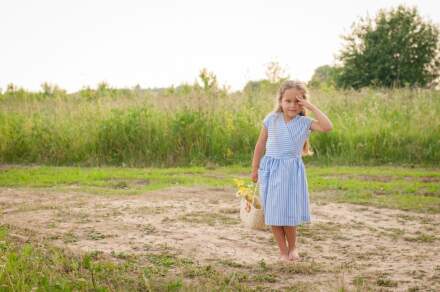Introduction
In a world increasingly dominated by technology and digital distractions, the timeless joy of creating with one’s hands remains a powerful form of expression, particularly for children. Arts and crafts serve as an essential conduit of creativity, offering children a unique platform to explore their imaginations while developing vital skills. Engaging in arts and crafts is more than just a pastime; it is a crucial component of child development that encourages emotional, social, cognitive, and motor skill growth. This article explores the myriad joys and benefits that arise from allowing children the freedom to express themselves through artistic endeavors.
Fostering Creativity and Imagination
One of the most significant joys of kids’ arts and crafts is the opportunity for self-expression and the stimulation of creativity. When children engage in creative activities, they learn to think outside the box and discover their unique artistic voices. The simple act of choosing colors, materials, and themes empowers children to make decisions and express their feelings, fostering a sense of autonomy and ownership over their work.
Unlocking Potential
Arts and crafts contribute to unlocking a child’s potential by encouraging divergent thinking—the ability to generate multiple ideas or solutions to a problem. For instance, when tasked with creating a collage, kids must decide how to arrange various materials, what colors to use, and how to tell a story through their artwork. This open-ended approach can lead to innovative solutions and strengthen problem-solving skills. The arts stimulate critical thinking and foster a mindset that embraces experimentation, where mistakes are not failures but rather stepping stones to discovery.
Exploring Materiality
In addition to enhancing creativity, arts and crafts provide children with the chance to explore different materials and techniques, from painting with watercolors to sculpting with clay. Each medium offers a unique sensory experience that encourages tactile exploration and helps children develop an understanding of various textures, forms, and colors. This hands-on experience is vital as it allows children to discover their preferences and aptitudes, providing insight into their artistic inclinations.
Developmental Benefits
Engaging in arts and crafts offers numerous developmental benefits that extend beyond self-expression. These activities play a crucial role in enhancing fine motor skills and hand-eye coordination, essential precursors to many everyday tasks, such as writing or using tools.
Fine Motor Skills and Coordination
Activities like cutting, gluing, drawing, or threading beads require precision and control, which help sharpen a child’s fine motor skills. Constantly manipulating tools and materials builds the dexterity necessary for tasks requiring greater precision. For example, creating a scrapbook involves a range of movements that fine-tune hand coordination. These small yet significant improvements contribute to overall physical development, making children more adept at various activities throughout their lives.
Building Social Skills
Arts and crafts are often social experiences, whether through group projects or sharing finished pieces with family and friends. When children create alongside peers, they enhance their communication skills, learn to collaborate, and develop empathy. Exchanging ideas, critiquing each other’s work constructively, and celebrating successes together foster a sense of community and belonging. This social interaction teaches important lessons about teamwork and respect for differing perspectives, which are invaluable skills both inside and outside the classroom.
Emotional Expression and Well-Being
In addition to cognitive and physical development, arts and crafts allow children to express their emotions and thoughts in a safe and constructive environment. This artistic outlet is vital, as it provides a platform for children to communicate feelings they may not yet have the words to express.
Coping Mechanism
Creating art can also serve as a therapeutic practice. Children often process their experiences and emotions through their artwork, making it an effective tool for coping with stress, anxiety, or difficult situations. A simple drawing can encapsulate a child’s feelings about changes in their lives, such as moving to a new house or adjusting to a new sibling. Engaging in such expressive activities supports emotional regulation and personal resilience.
Fostering Confidence
Completing an arts and crafts project offers a tangible sense of accomplishment, boosting a child’s confidence and self-esteem. Children learn that their efforts can lead to beautiful results and that their ideas are worthy of being expressed. This newfound confidence often transcends the realm of art, influencing how they approach various tasks and challenges in life. Encouraging children to share their work with others, such as family or friends, further enhances their self-worth and reinforces that their creations matter.
Conclusion
The joys and benefits of kids’ arts and crafts are vast and multifaceted, extending into countless aspects of a child’s development. From fostering creativity and enhancing fine motor skills to building social connections and promoting emotional well-being, engaging in artistic activities is not only enjoyable but also essential for holistic development. In a rapidly evolving world, allowing children the freedom to create can spark lifelong passions, nurture critical skills, and instill a sense of confidence that will serve them well beyond childhood. As parents, educators, and caregivers, we must prioritize and champion opportunities for children to explore their creativity through arts and crafts—a nurturing ground for the innovators and visionaries of tomorrow.








Leave a Comment